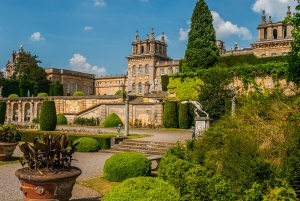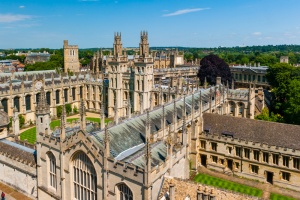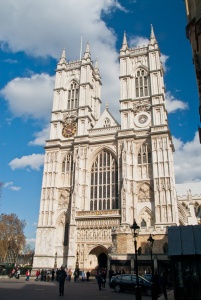
Born to a Nottinghamshire farming family in 1661, Nicholas Hawksmoor became fascinated by architecture at an early age. At 18 he left home to work in London as a clerk for Sir Christopher Wren, the Surveyor General.
Young Nicholas was a quick study, and he readily absorbed the skills of his master. From 1684 on Hawksmoor worked with Wren on all his major architectural projects, including Chelsea Hospital, the rebuilding of the London churches damaged in the great Fire of London, St. Paul's Cathedral, Hampton Court Palace, and Greenwich Hospital.
Along the way Hawksmoor acquired a number of posts which speak to his developing skill; in 1689 he was named Clerk of the Works at Kensington Palace, and in 1705 Deputy Surveyor of Works at Greenwich.
At about the turn of the century Hawksmoor began to help one of the other fashionable architects of the day, John Vanbrugh.
With Vanbrugh he was involved in the building of Blenheim Palace for John Churchill, Duke of Marlborough, and Castle Howard for the 3rd Earl of Carlisle.

Shortly after his work with Vanbrugh, Hawksmoor began to take commissions on his own. His style differed from both the prominent men he had worked with. It was neither so gracefully classical as Wren, nor as enthusiastically ornate as Vanbrugh's Baroque excesses.
Unlike many of his contemporaries, such as James Gibbs and Thomas Archer, Hawksmoor had never travelled abroad to be influenced by Italianate fashion. Instead, much of his Roman classical style was gained through close study of books.
Also unlike his peers, Hawksmoor made his name with church and university architecture rather than building houses for the wealthy. All Soul's College, Oxford, (1716-35) is probably his finest University work. There he built the exterior of a new Hall and Library in Gothic style to blend harmoniously with the surviving medieval buildings, but the interiors were pure classical form. Perhaps it was Hawksmoor's graceful pinnacled towers that prompted the "dreaming spires" poem?
Showing his versatility, Hawksmoor designed the Clarendon Building in Roman classical style, and the wall screening Queen's College from High Street in exuberant Baroque

west towers
On the ecclesiastical front, Hawksmoor was responsible for six new churches in London, built to serve the expanding London suburbs. Each of these designs is different, each unique. Of these churches only St. Mary Woolnoth is actually in the City.
One of Hawksmoor's final great works was on another church, Westminster Abbey. When Christopher Wren died in 1723, Hawksmoor became Surveyor of the Abbey in Wren's place.
In that post he was responsible for designing the great towers which flank the western front, although the work was not finished until after his death. What is remarkable is how he managed to make his work blend in so well with the earlier parts of the Abbey.
It is perhaps unfortunate that Nicholas Hawksmoor had such a famous master, for he deserves to be remembered for his own abilities as one of the finest British architects of any era.
Related:
Christopher Wren
Inigo Jones
Sir John Vanbrugh
English Architecture
Stuart attractions to visit (historic places to see tagged with 'Stuart')
Stuart London" in our "London History" guide
